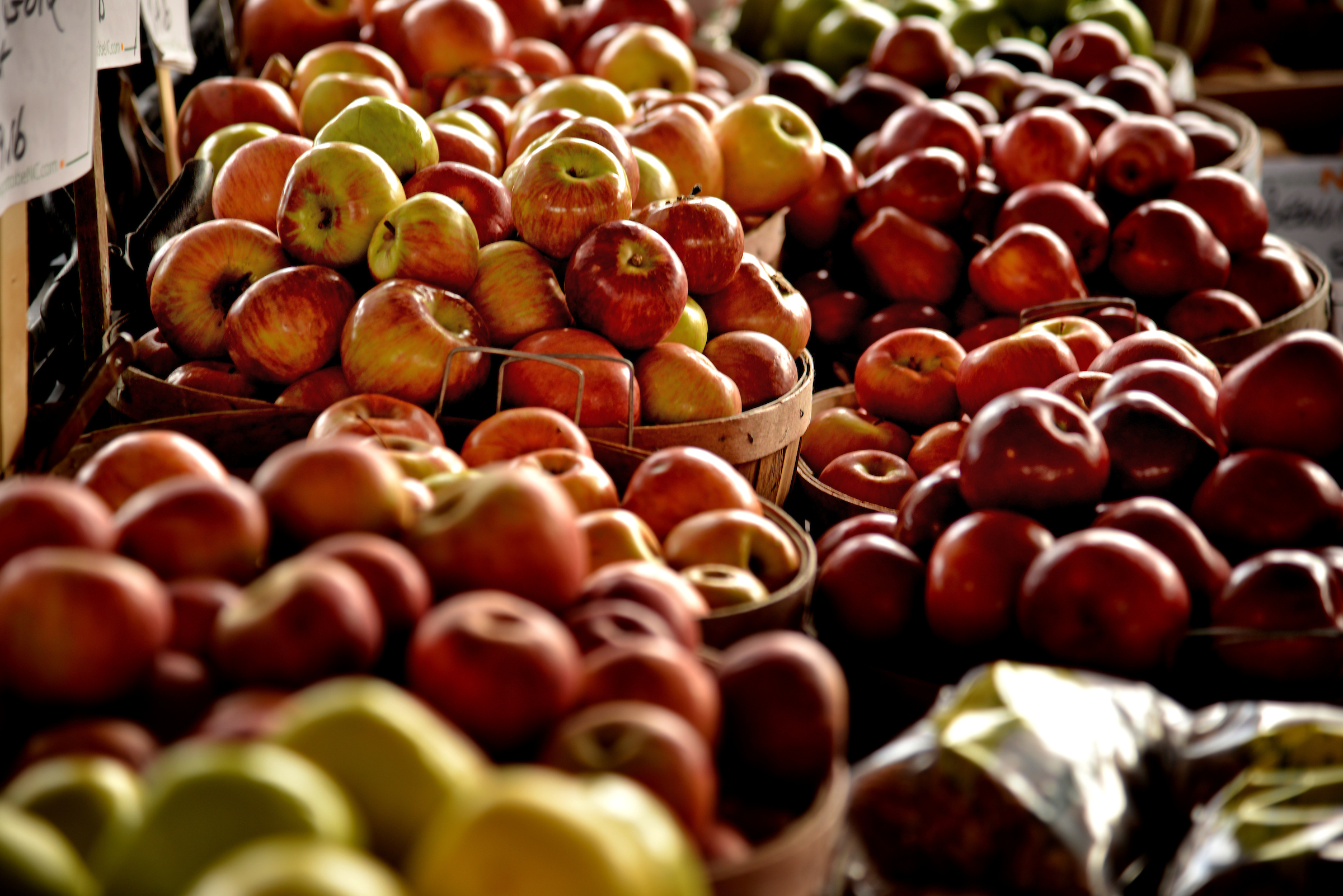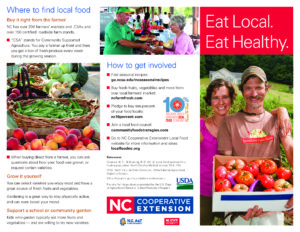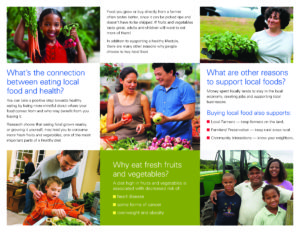Nutrition & Health
go.ncsu.edu/readext?249962
en Español / em Português
El inglés es el idioma de control de esta página. En la medida en que haya algún conflicto entre la traducción al inglés y la traducción, el inglés prevalece.
Al hacer clic en el enlace de traducción se activa un servicio de traducción gratuito para convertir la página al español. Al igual que con cualquier traducción por Internet, la conversión no es sensible al contexto y puede que no traduzca el texto en su significado original. NC State Extension no garantiza la exactitud del texto traducido. Por favor, tenga en cuenta que algunas aplicaciones y/o servicios pueden no funcionar como se espera cuando se traducen.
Português
Inglês é o idioma de controle desta página. Na medida que haja algum conflito entre o texto original em Inglês e a tradução, o Inglês prevalece.
Ao clicar no link de tradução, um serviço gratuito de tradução será ativado para converter a página para o Português. Como em qualquer tradução pela internet, a conversão não é sensivel ao contexto e pode não ocorrer a tradução para o significado orginal. O serviço de Extensão da Carolina do Norte (NC State Extension) não garante a exatidão do texto traduzido. Por favor, observe que algumas funções ou serviços podem não funcionar como esperado após a tradução.
English
English is the controlling language of this page. To the extent there is any conflict between the English text and the translation, English controls.
Clicking on the translation link activates a free translation service to convert the page to Spanish. As with any Internet translation, the conversion is not context-sensitive and may not translate the text to its original meaning. NC State Extension does not guarantee the accuracy of the translated text. Please note that some applications and/or services may not function as expected when translated.
Collapse ▲Eating more fruits and vegetables have countless benefits; not only for your physical and mental well-being but also for mitigating chronic diseases, high health care costs, and more. Learn more about this topic and the projects across the state that are working to increase North Carolinian’s intake of fresh fruits and vegetables. Scroll further for guides, toolkits, and program information on food preparation and nutrition, local food and health, and food safety, and a recipe library.

Various apples for sale at the North Carolina State Farmer’s Market in the Fall.
On This Page
| Food Preparation & Nutrition | Local Food & Health |
| Food Safety | Recipes |

- Guidelines for Healthy Recipes Used in Extension Programming: This one-pager highlights important things to remember when creating a program around cooking and nutrition.
- Best Practices for Utilizing Local Food in Nutrition Education and Cooking Classes: This Extension guide is designed to help you think through how you could incorporate local food into your nutrition education and cooking classes. It also provides tips on making local food a part of the educational experience.
- Family-Based Nutrition Classes: A Guide for Nutrition Educators: This guide provides considerations and tips for educators that are developing a family-based nutrition class. It was designed to be used as part of a regular series of nutrition education classes, such as SNAPEd, the Expanded Food and Nutrition Education Program (EFNEP), Faithful Families Eating Smart and Moving More, and other community nutrition education programs.
- Food Pantry Nutrition Classes: A Guide for Nutrition Educators: This guide provides considerations and tips for educators that are developing a nutrition class in a food pantry setting or for food pantry clients. It was designed to be used as part of a regular series of nutrition education classes, such as SNAPEd, the Expanded Food and Nutrition Education Program (EFNEP), Faithful Families Eating Smart and Moving More, and other community nutrition education programs.
- Grocery Store Tours: A Guide for Nutrition Educators: A Grocery Store Tour is a great way to reinforce food resource management skills learned through community nutrition education classes that helps participants stretch their food resources to feed their families throughout the month. This guide was designed to be used as part of a regular series of nutrition education classes.
- Farmers’ Market Tours: A Guide for Nutrition Educators: A Farmers’ Market Tour is a great way to introduce your participants to an abundant source of local fruits and vegetables. It can also reinforce messaging about healthy eating and local foods. This guide was designed to be used as part of a regular series of nutrition education classes.
- North Carolina’s Plan to Address Obesity: Healthy Weight and Healthy Communities 2013-2020: This Plan includes evidence-informed or evidence-based strategies for anyone working in the area of overweight and obesity prevention. The Plan is designed to steer the efforts of those working as part of the Eat Smart, Move More movement to make healthy eating and physical activity the easy choice for all North Carolinians.
- Eat Smart NC: Bring Fresh Produce to your Setting Guide: A planning and resource tool for anyone who would like to have fruits and vegetables, especially locally grown, available to buy in their worksite, place of worship, neighborhood or at any gathering place.
- Harvest of the Month Handouts: NC Harvest of the Month handouts from Steps to Health highlight one fruit or vegetable and include nutrition, physical activity, recipes, and fun facts related to North Carolina.
- Local Food Program Cooking Demonstrations: This Google folder contains ten recipe demos. Each recipe includes considerations on how to best prepare, necessary supplies, and best practices for your cooking demonstration.

- Cooking Local Foods Videos: This Extension page houses a series of videos that cover basic cooking skills such as knife safety, sautéing, roasting, steaming, and more.
- Steps to Health YouTube Channel: Explore this channel to find a large library of videos about nutrition and health and follow-along recipes.
- Locally Delicious Video Series: A kid-friendly cooking video series that involves a weekly video, highlighting a locally grown fruit or vegetable and showing how to cook it using a simple recipe.

- Expanded Food & Nutrition Education Program: EFNEP is a program of Cooperative Extension through NC State University and NC A&T State University. It offers nutrition classes to help families and youth cook healthy meals at home, be more active, save money on food costs, and handle food safely.
- Steps to Health: Steps to Health is NC State University’s Supplemental Nutrition Assistance Program-Education (SNAP-Ed) Program that empowers youth, adults, and communities through evidence-based nutrition programs to promote healthy eating behaviors and food resource management strategies. Explore their public website, page for Extension Agents, and YouTube Channel for nutrition and recipe videos.
- Eat Smart, Move More North Carolina: A statewide movement promoting opportunities for healthy eating and physical activity wherever people live, learn, earn, play, and pray.
- UNC Center for Health Promotion and Disease Prevention: This UNC Center addresses pressing health problems by collaborating with communities to conduct research, provide training, and translate research findings into policy and practice.
- Med Instead of Meds: Eating the “Med Way” has been proven to decrease forms of cancer, protect against chronic illnesses, and more. Learn about the science behind this way of eating, recipes and tools related to this program.
- Eat Local. Eat Healthy. (links to print version)
 Tri-fold brochure developed by North Carolina Cooperative Extension.
Tri-fold brochure developed by North Carolina Cooperative Extension.
- Instructions for use:
- Please print professionally. The brochure design does not print well on home/office printers.
- To get a price quote, give your printer these Print Specifications:
 11 x 8.5 full bleed (this is the size of the paper, bleed means color comes all the way to the edge)
11 x 8.5 full bleed (this is the size of the paper, bleed means color comes all the way to the edge)- Trim, Score and Trifold to 3.66 x 8.5 (this means cut off the edges and fold it to finished size)
- 4C over 4C (translates to – full color on both sides)
- 80 l.b Matte or Dull Text (this is the type of paper — this is NOT uncoated, it is a coated paper with a matte finish as opposed to a glossy finish)
- Instructions for use:

- State Indicator Report on Fruits and Vegetables: This report from the CDC highlights approaches to increase the purchase, supply, and demand of fruits and vegetables in states and communities across the US. It shows the status of ten indicators of fruit and vegetable access and production for all 50 states and the District of Columbia, as well as state successes and strategies for improvement.
- North Carolina Action Guide on Fruits and Vegetables: This CDC guide provides actionable steps that public health practitioners, decision makers, and agriculture and food systems leaders can take to promote a healthy food environment and support fruit and vegetable consumption in NC.
- Guide to Strategies to Increase the Consumption of Fruits and Vegetables: This CDC guide includes information on promoting food policy councils, starting farmers’ markets and community-supported-agriculture, supporting community and home gardens, and more.
- Have a Plant: Fruits & Veggies for Better Health: This plant-forward eating guide offers simple ways to add more fruits and veggies to your day. Their website offers expert advice, nutrition and storage information, shopping tips, healthy menus and recipes, kid-friendly recipes and healthy tips, as well as ways to save money using fruits and veggies.
- Delivering Community Benefit: Healthy Food Playbook: Explore this website to learn about and how to utilize best practices to promote healthier food access and food systems.
- NC 10% Local Food Spotlight Posters: Explore these monthly posters from NC 10% Campaign and UFoods that highlight an in-season fruit or vegetable. They include health benefits, recipe ideas, and information on how to find a local food provider.
- Food Safety for Consumers: N.C. Fresh Produce Safety Portal provides information to consumers concerning foodborne illnesses and educational resources.
- Food Safety for Small Businesses, Policy & Agritourism: Check out resources for understanding safe food handling in these settings.
- Home Food Preservation: This Extension page provides evidence-based training and materials for safely preserving foods at home including topics such as pressure canning, fermentation, dehydration and food storage.
- Food Safety for Growers: This Extension page includes grower-specific resources that will enhance the materials relating to Good Agricultural Practices (GAPs).
- Food Safety for the Food Industry: This Extension page includes information on processor standards such as Good Manufacturing Practices (GMPs) and Hazardous Analysis Critical Control Points (HACCP).
- Food Safety for Processors
Food Safety: How to Clean Up Your Act at Home: This guide from SafeHome.org provides an overview of food safety subjects such as food preparation, higher and lower risk foods, nutritional labels, GMO safety, and more.
- Recipe Library: Explore Extension’s library of recipes that are recommended for Extension and general public usage.
Primary Contact:
Catherine Hill
Nutrition Programs Manager
NC State University Department of Agricultural and Human Sciences
catherine.hill@ncsu.edu






